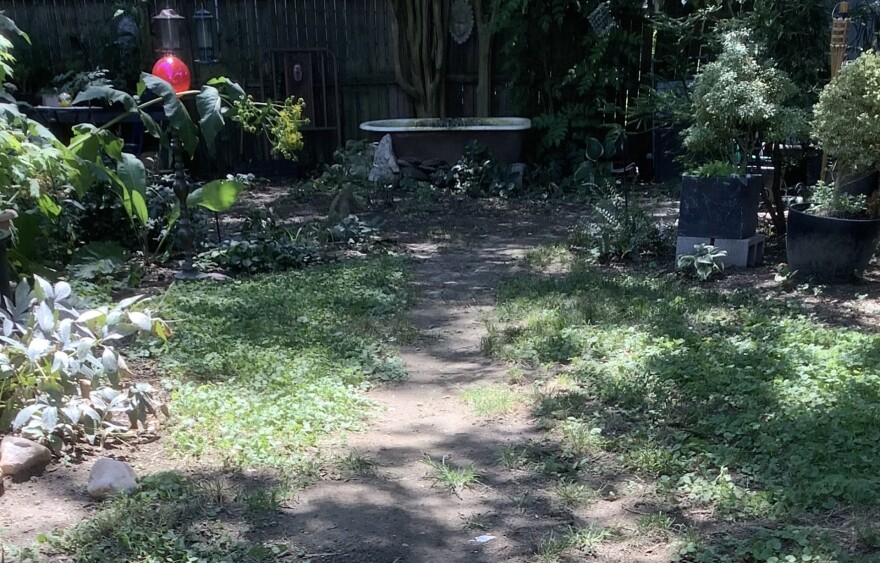The life of a gardener has its own challenges, but when you add dogs into the mix it really can be frustrating for a lot of people. As the number of both gardener and dog parents increases across the country, more people realize how hard it is to maintain a garden with their four-legged friends. Through the years of being an avid gardener and a multi-dog dad, I have learned a few tricks that have made my love of both garden and dogs possible to co-exist. Even though every dog is different, I hope to give some hints on how to start your garden while having dogs.
First, Lower Your Expectations on how you think your garden should look. If you are wanting your backyard to be a botanical garden, it’s probably not going to happen without spending tons of money on dog training and invisible fencing. This isn’t feasible for the average person, and you won’t have guaranteed results. You have to be flexible in garden planning and layout. Now with your lowered expectations, watch and see how your dog/dogs act in your yard. Every dog is different so there are no textbook answers on how they will act in the garden. Watch and see if your dog has one of these tendencies. Do you have a digger, a rambunctious bulldozer or even a chewer?
If you have a digger keep a hard rake and possibly some extra topsoil on hand. If the holes are small or shallow simply rake them out. If larger you may need to fill it in with topsoil before raking it back out. You also may need to add something on top such as a stone to keep them from digging the nicely covered hole until it all settles. Dogs like to also dig in fresh soft soil. If you notice holes, get them covered to avoid trip hazards. If it's a large container your pooch is digging in (yes, this can happen) I have learned to add 1-3” river rocks to the top of large containers that have trees or shrubs planted in them. The stones keep the dogs from digging out the plantings and are uncomfortable for them to lay on.
If it’s the bulldozer you have, watch and see what your dog’s natural habits are. A lot of times, dogs can be creatures of habit and use the same paths. In this case, use their routines to your advantage. When possible, use the paths they have created as your own — or let the path dictate how the bed lines will look. Try not to put bed lines in the way of their paths, either. Why fight that habit when you don’t have to? Never plant right up against a fence line.
Try to leave space between the fence and plants so the dogs have space to travel the fence without trampling everything. They will run the line after squirrels or say hello to the neighbors. I also like to plant in groups leaving space to use as “paths.” Especially when you have wide beds this comes in handy for you as well. This makes it much easier to move around without stepping on everything. For tender plants, consider using deterrents such as large stones or garden statuaries in front of them. So if your dog runs in the bed, your new favorite plant has a chance not to get run over.

And then there is the chewer. I think most people are afraid to mix gardening and dogs for the fact that a lot of dogs chew; especially in the puppy stage. If you already have some existing plants in your yard, start off by identifying them. There are many plants that can be toxic to dogs and humans alike, and you might want to know if there is a potential hazard. If you know you have toxic plants, always keep an eye on your dog making sure they aren’t using the plants as chew toys. For new plantings, do a little research to see if what you are planting is safe for your pets or ask the nursery for assistance in choosing plants.. Some tags in garden center plants will tell you if the plant is toxic, too. Some “dog friendly” plants you may consider including in your landscape are; Bottle brush, Camellia, Magnolia, Marigolds, Viburnums and Star Jasmine. If you feel that your dog has eaten something toxic you could call the ASPCA Pet Poison Control Hotline at (888) 426-4435 or Poison Pet Hotline at (855) 764-7661 for suggestions on what to do. If your dog seems really sick, call your veterinarian as soon as possible.
I feel that everyone should experience the joy of gardening. I hope what I have experienced through the years with gardening with dogs will help you to get started. With a little extra work, a lot of patience and being adaptable, even dog parents can enjoy an outdoor space created for you and your four-legged friends.
Go out and get your hands dirty!
-Serome Hamlin







